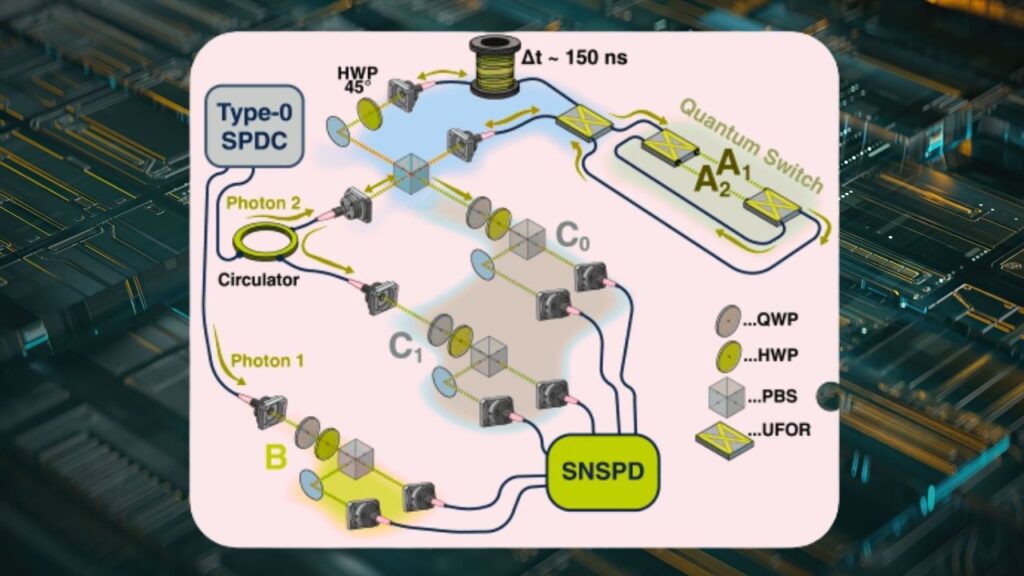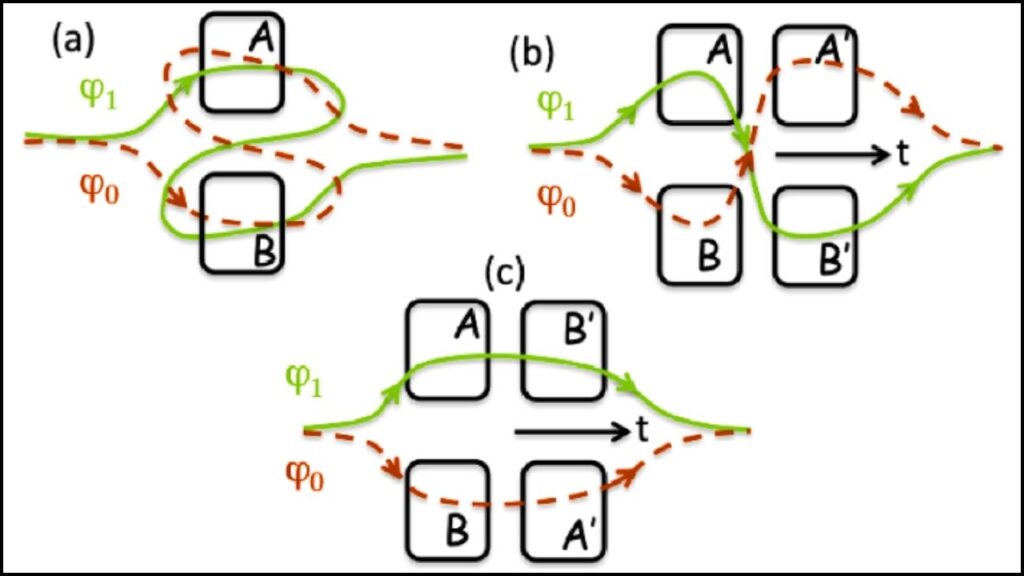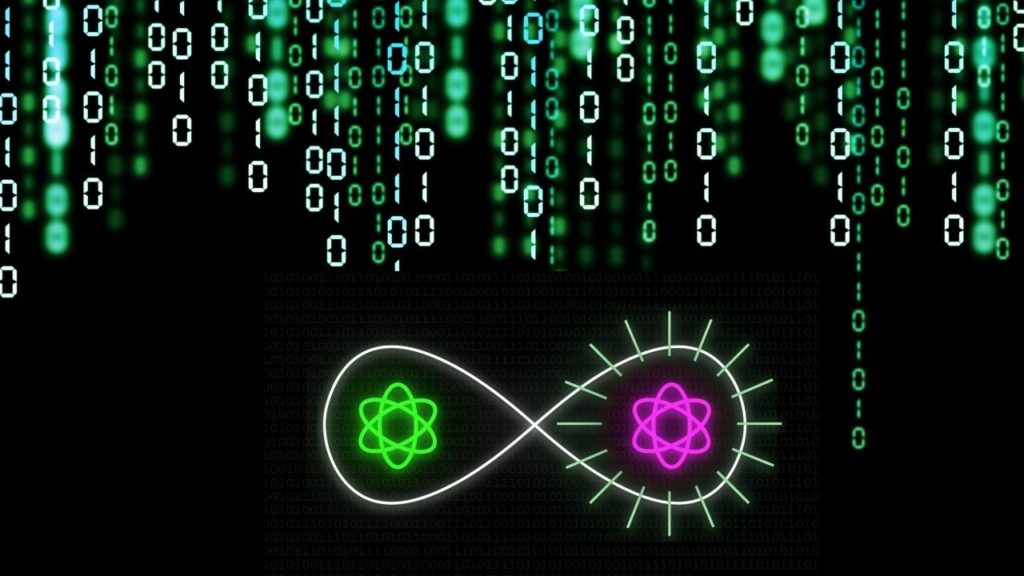Quantum Experiments Confirm Indefinite Causal Order: Quantum physics has always pushed the boundaries of what we know about reality. Now, in a breakthrough that’s both mind-bending and practical, quantum experiments confirm indefinite causal order, independent of devices. In simple terms, scientists have shown that, at the quantum level, the order of events—what causes what—can exist in a superposition, where “A causes B” and “B causes A” can both be true at the same time.

Even more impressively, these results have been verified in a way that doesn’t depend on trusting the details of the experimental devices, making the findings robust and reliable.
Let’s break down what this means, why it matters, and how it could change the future of technology and our understanding of the universe.
Quantum Experiments Confirm Indefinite Causal Order
| Feature/Fact | Details & Stats |
|---|---|
| What is Indefinite Causal Order? | A quantum phenomenon where the order of events is in superposition |
| Main Experimental Tool | The Quantum Switch |
| Device-Independent Verification | Achieved by violating a Bell-like inequality |
| Statistical Significance | Results exceeded classical limits by 24 standard deviations |
| Professional Impact | Potential for advances in quantum computing, communication, and metrology |
| Official Resource | University of Vienna Quantum Group |
Quantum experiments confirm indefinite causal order, independent of devices—a discovery that shakes up our understanding of cause and effect and opens new horizons for technology and science. Whether you’re a curious student, a quantum professional, or just someone who loves big ideas, this breakthrough is a perfect example of how quantum physics continues to surprise and inspire.
What Is Indefinite Causal Order?
Indefinite causal order (ICO) is a quantum phenomenon where the sequence of events is not set in stone. Imagine if, instead of always having to put on your socks before your shoes, you could somehow do both at once, or in any order, until someone checked. In quantum mechanics, this isn’t just a fun thought experiment—it’s real.

In classical physics, we always assume that causes happen before effects. If you flip a light switch, the light turns on. But in the quantum world, certain processes can exist where the order of “flipping the switch” and “light turning on” is not predetermined. This is called indefinite causal order.
The Quantum Switch: A Real-World Example
The quantum switch is the best-known example of indefinite causal order. In this setup, a quantum system (like a photon) can go through two operations, A and B, but the order in which it does so is not fixed. The system exists in a superposition of “A before B” and “B before A” until it’s measured.
Why Is This Important?
Challenging Classical Notions
This discovery challenges one of the most basic ideas in science: that time moves in one direction and that causes always precede effects. Indefinite causal order suggests that, at least for quantum systems, nature doesn’t always play by these rules.
Practical Advantages
Indefinite causal order isn’t just a philosophical curiosity. It has real, measurable advantages:
- Quantum Computing: Certain computations can be done more efficiently using indefinite causal order, potentially speeding up problem-solving in ways classical computers can’t match.
- Quantum Communication: Information can be transmitted more reliably over noisy channels when the order of operations is indefinite, as shown in experiments with entangled photons.

- Quantum Metrology: Measuring delicate quantum systems can be improved using these techniques, leading to more precise scientific instruments.
Device-Independent Verification: Why It Matters
In science, it’s crucial to be sure that results aren’t just artifacts of the equipment used. Previous experiments showing indefinite causal order relied on trusting the details of the devices. Now, by using a special kind of test called a Bell-like inequality, researchers have shown that the results hold up even if you don’t trust the devices at all. This is known as device-independent verification.
In recent experiments, scientists violated this Bell-like inequality by a whopping 24 standard deviations beyond the classical limit. This means the effect is real, not a fluke, and not dependent on hidden details of the equipment.
The Science Behind the Scenes
How Does Indefinite Causal Order Work?
At the heart of indefinite causal order is the idea of superposition—a core concept in quantum mechanics. Just as a quantum particle can be in two places at once, a quantum process can be in a superposition of two different orders.
Process Matrices
To describe these scenarios, physicists use something called a process matrix. This mathematical tool allows for processes where the causal order isn’t fixed, extending the standard framework of quantum mechanics.
Causal Inequalities
To test whether a process really has indefinite causal order, scientists use causal inequalities. If the results of an experiment violate these inequalities, it means the process can’t be explained by any definite order of events.
Step-by-Step: How the Experiment Works
- Prepare a Quantum System: Usually a photon, which can be manipulated easily.
- Set Up Two Operations (A and B): These could be anything from rotating the photon’s polarization to passing it through different filters.
- Create a Superposition: Use a quantum switch to put the photon in a state where it can go through A then B, or B then A, at the same time.
- Measure the Outcome: Use detectors to see what happens after the photon has passed through the operations.
- Analyze the Data: Check if the results violate the causal inequality, confirming indefinite causal order.
Practical Advice: Why Should Professionals Care?
If you work in quantum computing, information science, or even advanced engineering, understanding indefinite causal order could open new doors:
- Stay Updated: Follow research from leading groups like the University of Vienna and read journals like Nature Review Physics.
- Explore Applications: Think about how indefinite causal order could improve algorithms, communication protocols, or measurement devices in your field.
- Collaborate Across Disciplines: This area sits at the intersection of physics, computer science, and engineering. Team up with experts from different backgrounds to unlock new possibilities.
Nano-Needle Biopsy Patch Could Replace Painful Tumor Sampling With Cellular Precision
Microsoft Declares the Dawn of Logical Qubits—Shifting Quantum from Theory to Practicality
Dell’s AI Leader Unveils New Enterprise-Focused Generative AI Strategy
FAQs About Quantum Experiments Confirm Indefinite Causal Order
Q: What does “indefinite causal order” mean in simple terms?
A: It means the order of events isn’t set—like flipping a coin, but instead of heads or tails, both happen at once until you look.
Q: How do scientists know the effect is real and not a trick of the equipment?
A: They use device-independent tests, which don’t rely on trusting the equipment. The results are so strong (24 standard deviations above the classical limit) that they’re statistically undeniable.
Q: What is a quantum switch?
A: It’s a setup where a quantum particle (like a photon) can go through two operations in a superposition of both possible orders.
Q: Are there real-world uses for indefinite causal order?
A: Yes! It can make quantum computers and communication systems more efficient and reliable.
The Future: Where Is This Research Going?
The confirmation of indefinite causal order, especially in a device-independent way, is a huge leap forward. It not only deepens our understanding of quantum mechanics but also lays the groundwork for next-generation technologies.
Researchers are now working to:
- Close remaining experimental loopholes.
- Find new applications in quantum computing, communication, and sensing.
- Explore the implications for our understanding of time and causality itself.






